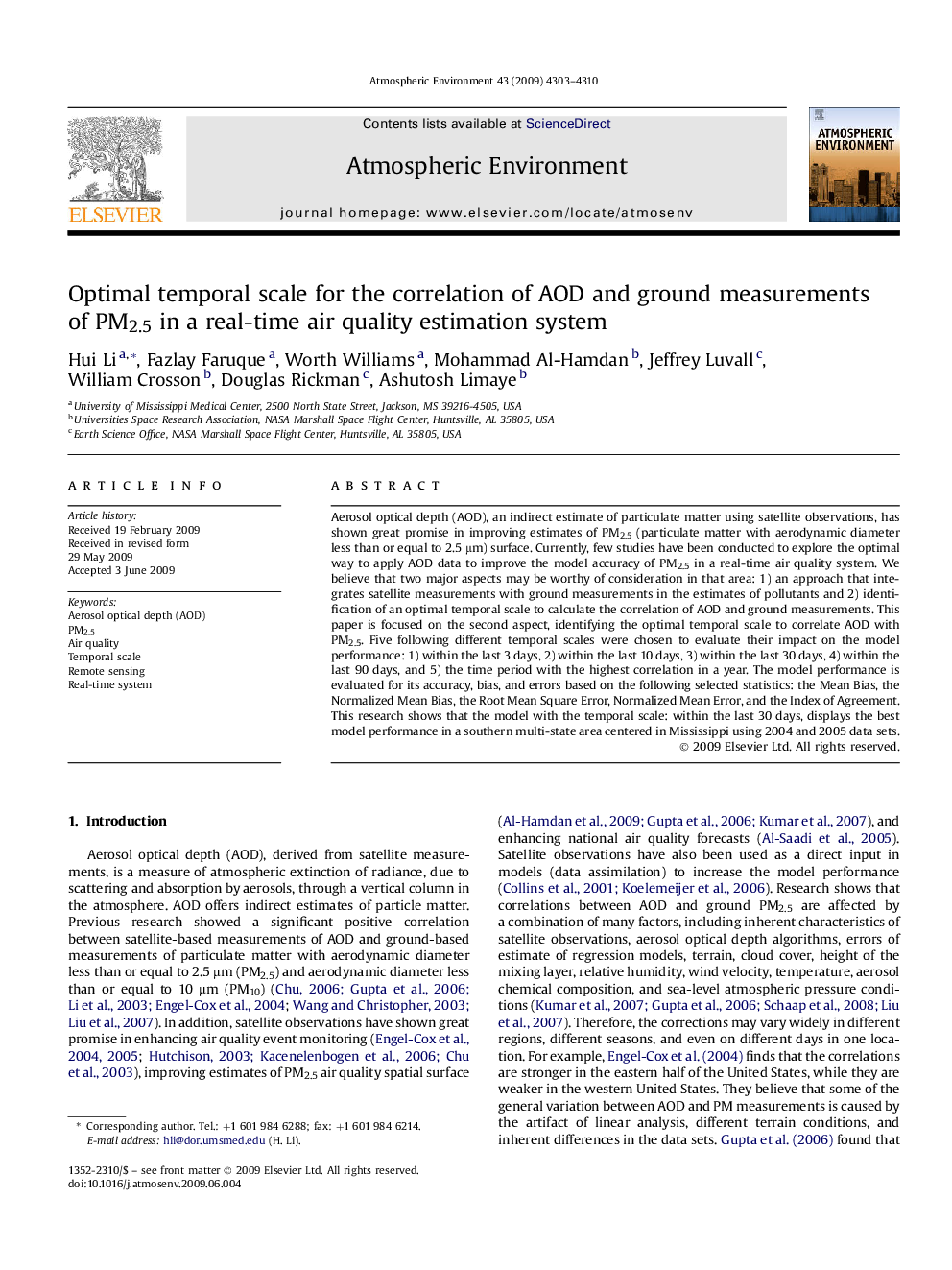| Article ID | Journal | Published Year | Pages | File Type |
|---|---|---|---|---|
| 4441454 | Atmospheric Environment | 2009 | 8 Pages |
Aerosol optical depth (AOD), an indirect estimate of particulate matter using satellite observations, has shown great promise in improving estimates of PM2.5 (particulate matter with aerodynamic diameter less than or equal to 2.5 μm) surface. Currently, few studies have been conducted to explore the optimal way to apply AOD data to improve the model accuracy of PM2.5 in a real-time air quality system. We believe that two major aspects may be worthy of consideration in that area: 1) an approach that integrates satellite measurements with ground measurements in the estimates of pollutants and 2) identification of an optimal temporal scale to calculate the correlation of AOD and ground measurements. This paper is focused on the second aspect, identifying the optimal temporal scale to correlate AOD with PM2.5. Five following different temporal scales were chosen to evaluate their impact on the model performance: 1) within the last 3 days, 2) within the last 10 days, 3) within the last 30 days, 4) within the last 90 days, and 5) the time period with the highest correlation in a year. The model performance is evaluated for its accuracy, bias, and errors based on the following selected statistics: the Mean Bias, the Normalized Mean Bias, the Root Mean Square Error, Normalized Mean Error, and the Index of Agreement. This research shows that the model with the temporal scale: within the last 30 days, displays the best model performance in a southern multi-state area centered in Mississippi using 2004 and 2005 data sets.
